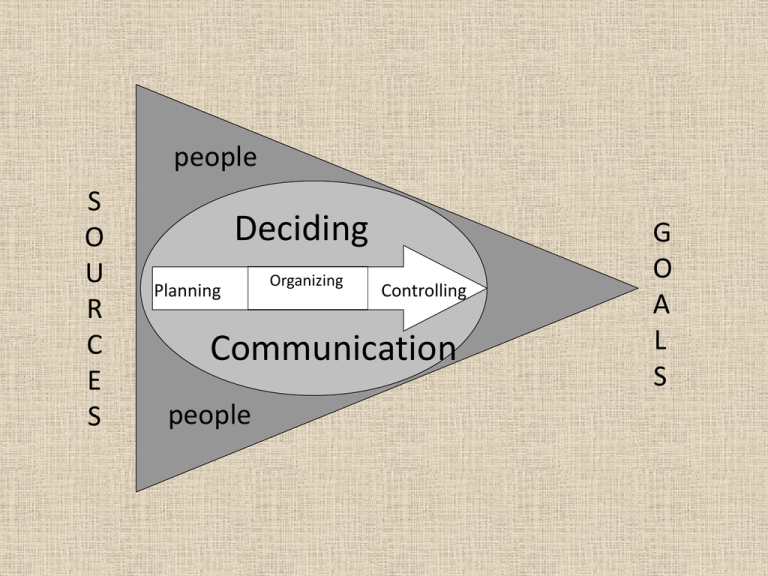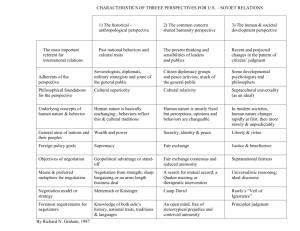Communication
advertisement

people S O U R C E S Deciding Planning Organizing Controlling Communication people G O A L S COMMUNICATION Content formal vs. informal verbal and nonverbal oral, written negotiation, critique,… JoHari window Hidden area Social perception • sentient person – experiences, actual situation,… • perceived person – visual aspect, status, communication knowledge • situation context Process of Communication SENDER ANNOUNCEMENT NOISE FEEDBACK RECIPIENT Types of business communication • downward communication • ascensional • horizontal • communication communication diagonal communication communicational channels • formal, – official, • informal, – content and structure of announcement, – other characteristics. factors for formal communication • age (difference betwen partners´ ages), • status, • situation, • mutual acquaintance. Ordinary communication forms • verbal communication, – words, • nonverbal communication. Nonverbal communication • proxemics - distances, • haptic - touches, • paralinguistic – ehm, diction, speech. • mimics - facial expression, • posture – human position Proxemics (15-75 cm) (75-120 cm) (120 - 210 cm) (> 2 m) 11 announcement 7% WORDS 55% BODY LANGUAGE 38% INTONATION, LANGUAGE CADENCE, ETC. ASSERTIVENESS • passive hearing, • submissive extortion, • aggressive extortion, • assertiveness. Ten Assertive Rights • I have the right to judge my own behavior, thoughts and emotions and to take the responsibility for their initiation and consequence. • I have the right to offer neither reason nor excuse to justify my behavior. • I have the right to judge whether I am responsible for finding solutions to others' problems. • I have the right to change my mind. • I have the right to make mistakes and be responsible for them. • I have the right to say "I don't know.” • I have the right to be independent of the good will of others before coping with them. • I have the right to be illogical in making decisions. • I have the right to say "I don't understand.“ • I have the right to say "I don't care“. techniques of assertiveness • „ Broken Record“, • „selective ignoring“, • „open door“, Communication in organization • notice boards, • internal discs, • intranet, • email, • oral communication. Negotiation • necessary activity, – managers have to negotiate, • depends on personality, – dimension dominant vs. submissive, – dimension agressive vs. sociable. Process of Negotiation • preparing • negotiation • evaluation preparing • information obtaining, • goals, limits, • analysis, • choice of strategy. negotiation • separate people and problems, • focus on interests, • creation mutually useful offers. evaluation • Was the strategy successful? Kinds of negotiation • competitive negotiation, – win - loss, • cooperate negotiation, – win – win or compromises, • fundamental negotiation, – oriented only to ground of problem swapping • explanation, • presentation of competitors opinions, • argumentation against the presentation • main points record. Conflicts and their solution • intrapersonal • interpersonal Intrapersonal conflicts • two positive powers (Buridan´s donkey) • two negative powers • positive activity and negative powers in one Evolution of conflict – homeostasis, – warning signals, – increasing of differencies, – Escalation, polarity, – separation, – destruction, – exhaustion, – latency. analysis of conflict reasons, groud on yourself Conflict solution to relationship • escape style (turtle), • confrontational style (shark), • compromise style (fox), • adaptive style (bear), • cooperative style (owl). Critique • unjustified, • justified.











